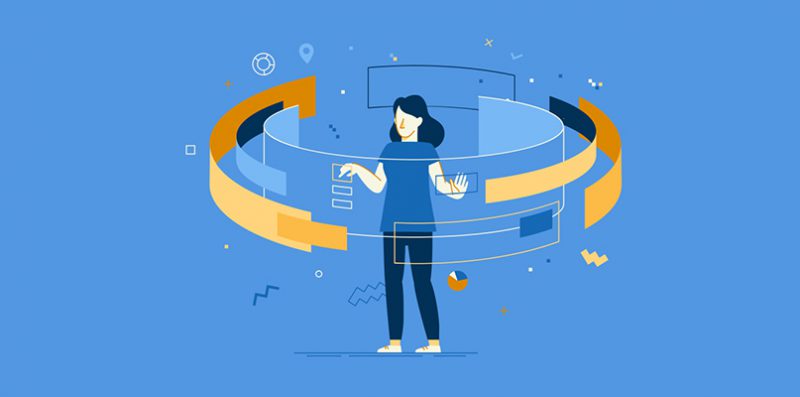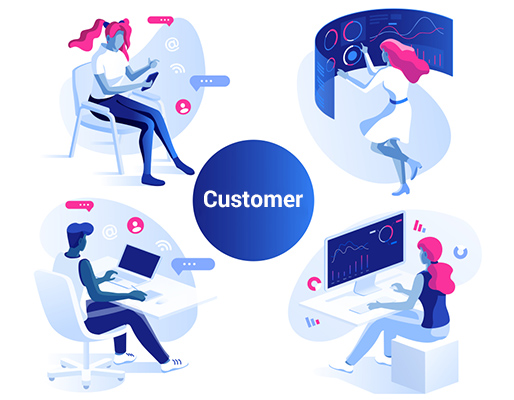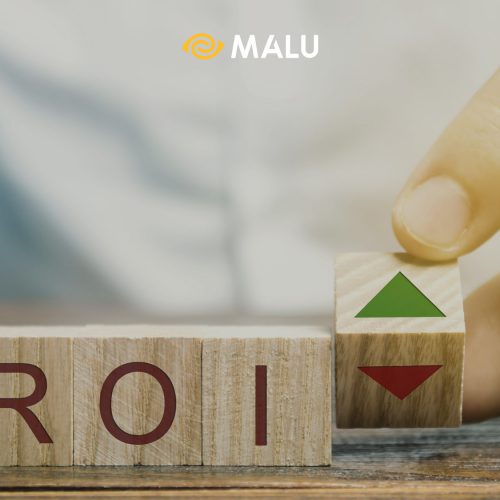
Are you confused in distinguishing between Customer Satisfaction and Customer Loyalty? This article will help you learn about the differences between these two definitions. Let’s discover together with Malu now:
>> Related articles:
What is Customer Satisfaction and Customer Loyalty?
Customer Satisfaction and Customer Loyalty are two important concepts, let’s learn about the definitions of these two terms first.
What is customer satisfaction?
Customer Satisfaction is a measure of customer satisfaction with a product, service, or a brand. This customer satisfaction index is usually measured through survey samples on a certain scale.

What is customer loyalty?
Customer Loyalty is the behaviors and attitudes of customers that show loyalty to a product, service or brand. In simpler terms, customers choose to buy your product over your competitors time and time again.
Customer experiences and their satisfaction come not only from the buying process, it is also a combination of many different steps of reception. And the more they know about our brand (in a positive way) the easier it is to create great experiences for them.
>>> What is brand loyalty? Build brand loyalty
For brick-and-mortar stores, face-to-face interaction creates an experience for the customer. It’s easy to see a customer coming in, and yelling at an employee for some reason, showing that the other guest didn’t have a good experience with your brand.

In contrast, customers who come to the store regularly with friends and family are loyal customers that every business aspires to find.
But for online businesses, it will be more difficult for you to determine what customers think of you. You can track the process of starting to buy a product, until the transaction is closed, but your website does not show the emotions of the buyer at that time, whether they are really happy or not.
At every brand touchpoint between your business and your customers, understanding their emotions will help you identify where we need to improve.
>>> Customer Retention – 12 Effective Customer Retention Strategies

Customer loyalty and Customer Satisfaction are not the same thing, so your business needs to measure both.
Customer Loyalty vs Customer Satisfaction: What’s the difference?
Imagine you are going to a store, choosing to buy the latest version of the 4K TV that you have noticed before. Staff give you a survey after the purchase is over, asking you if you are satisfied with your experience at the store.
Sure you’ll fill it in, you’ve got a TV at a pre-determined price you’re willing to pay, and at that point you’re looking to get your new TV set up quickly.
Now imagine an employee giving you a completely different survey form after the transaction is over – this one asking you if you would be willing to recommend the store to friends and family.

Actually, you can also choose to buy goods through e-commerce sites quickly, easily and conveniently, but because of the desire to have a new TV to watch the World Cup final tonight, you had to go to the store, accept no discount, and bring it home. So maybe when your friends aren’t in a hurry, you won’t refer them to the store either.
In the upper survey form you are measuring the past (customer satisfaction), while in the lower sample you are measuring the future (customer loyalty). And as you can see, they give 2 completely different responses.
>>> Breakthrough branding strategy
How is Customer Satisfaction measured?
Customer satisfaction is the satisfaction and satisfaction of customers after completing a transaction with your business. You can use this metric to gauge whether their experience has lived up to their expectations.
This is also a good way for you to lower your low rating customers, creating a secret channel where they can send their problems and dissatisfactions, instead of you letting them express them angrily. data on social networking sites or review portals.

You can choose to measure customer satisfaction on a scale out of 10 with specific questions. A high score shows that the customer’s shopping journey is smooth and easy. Conversely, a low score means that there is a problem, and they are more likely to not come back next time without timely support.
How is Customer Loyalty measured?
Measuring Customer Loyalty – Customer loyalty is also an essential indicator for businesses. Loyal customers will write good reviews about you on social media, recommend you to their friends and family, return to the store to spend more shopping.
Unlike Customer Satisfaction, this satisfaction measurement is to show what you will get from the customer over the long term.

The measurement of this index can also be done on a 10-point scale, please refer to the Net Promoter Score system.
Improved Customer Satisfaction and Customer Loyalty
No business can achieve 100 perfect points, which means you will always have to improve these 2 factors for sustainable development. Here are 4 elements you should focus on building.
>>> 3 basic steps to help brands compete and win
1. Increase the level of expectation
Make sure every customer shopping process is optimized, fast and easy. Meeting expectations is the key to ensuring customer satisfaction. Some ideas on increasing customer expectations:
- Train a professional customer care team
- Add unexpected gifts and discounts without informing customers in advance
- Send free gifts when customers order
- Free delivery
- Voucher to buy goods, use partners’ services, …
In addition, meeting expectations also helps you increase customer trust in your brand.
2. Improve communication.
If you communicate with customers well, your brand will be remembered by customers more, they are more likely to have emotional connections. Consider some of the following options:
- Send notification to update shipping status
- Send an order confirmation message
- Dedicated to supporting all customer complaints
- Thorough explanations for all delays and other reasons (may include additional benefits for customer understanding)

3. Gratitude to customers.
You should give gratitude to old customers, loyal customers when coming back to buy your products many times. This will leave a very good impression on them, and you will certainly receive winged recommendations to friends, relatives, and colleagues from customers.
4. Use metrics to evaluate and improve your business.
Capturing and monitoring the health of an enterprise is an important and necessary job. Measuring whether your email marketing campaign is generating more sales is an example to help you evaluate.
Remember, satisfied customers do not necessarily become your loyal customers.
Discover more brand articles in Malu




